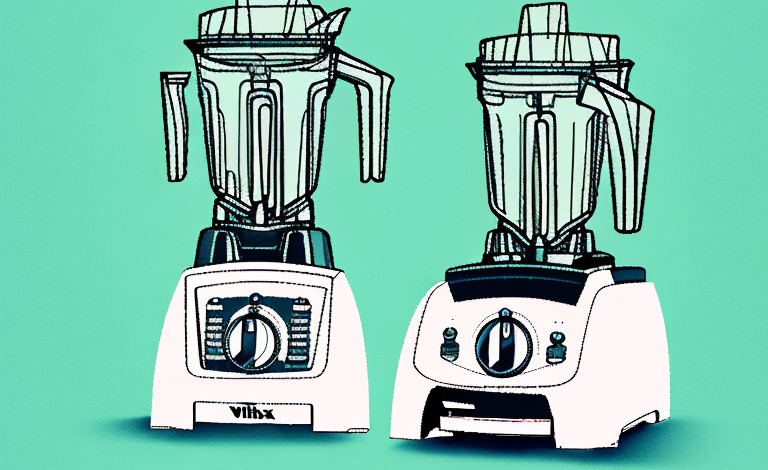Fingerprint identification has become a widely accepted method of identifying individuals in criminal investigations and other types of security situations. However, this technology is not without its downsides. In this article, we will explore the various disadvantages of fingerprint identification and its potential impact on people’s lives.
The history of fingerprint identification
Fingerprint identification has been around for centuries, with the first recorded use of fingerprints for identification purposes taking place in ancient Babylon around 500 BC. However, the modern use of finger identification technology began in the 1800s when Sir Francis Galton developed a system for classifying fingerprints based on their characteristics. The use of fingerprint identification has since expanded, with their use now seen in law enforcement, border control, and other security-related areas.
In addition to its use in law enforcement and security, fingerprint identification technology has also found its way into everyday life. Many smartphones now use fingerprint scanners as a means of unlocking the device, and some banks have even begun using fingerprint identification as a way to authenticate transactions. As technology continues to advance, it is likely that fingerprint identification will become even more prevalent in our daily lives.
How fingerprint identification works
Fingerprints are unique to each person, even among identical twins. Fingerprints are formed during fetal development and are determined by a person’s genes, environment, and other factors. Fingerprint identification technology works by comparing two or more fingerprints side by side to determine whether there is a match.
There are three main types of fingerprints: arches, loops, and whorls. Arches are the least common type and have a simple, smooth ridge pattern. Loops are the most common type and have a ridge pattern that enters from one side of the finger, loops around, and exits from the same side. Whorls have a circular or spiral ridge pattern. Fingerprint identification technology uses these ridge patterns to create a unique fingerprint profile for each individual, which can then be compared to other fingerprints in a database to identify a match.
Benefits of fingerprint identification
Fingerprint identification has many advantages over other methods of identification. For one, it is virtually impossible to fake or alter fingerprints, making it a secure method of identification. Additionally, fingerprints are unique to each person, making it easy to identify individuals when they are compared to a database containing known fingerprints.
Another benefit of fingerprint identification is its speed and efficiency. With the use of modern technology, fingerprint identification can be done quickly and accurately, allowing for faster processing times and reducing the need for manual identification methods. This can be especially useful in high-security environments, such as airports or government buildings, where time is of the essence.
Fingerprint identification also has a wide range of applications beyond just criminal investigations. It can be used for access control in secure facilities, such as hospitals or research labs, to ensure that only authorized personnel are allowed entry. It can also be used in financial institutions to verify the identity of customers and prevent fraud. With its versatility and reliability, fingerprint identification is becoming an increasingly popular method of identification in various industries.
Limitations of fingerprint identification
Although fingerprint identification has many benefits, it is not a perfect system. One significant limitation of fingerprint identification is that it requires a high degree of accuracy to be effective. If the quality of the fingerprints is poor or if the comparison process is faulty, it can result in false positives or false negatives. Additionally, fingerprints can be difficult to obtain from certain types of people, such as those with skin conditions or amputations.
Another limitation of fingerprint identification is that it is not always a foolproof method of identification. In some cases, criminals have been known to alter their fingerprints through various means, such as burning or cutting their fingertips. This can make it difficult or impossible to accurately identify them through fingerprint analysis. Furthermore, fingerprint identification is not effective in cases where the perpetrator wears gloves or other hand coverings to avoid leaving fingerprints at the crime scene.
Accuracy of fingerprint identification
Despite the limitations of fingerprint identification, it is generally considered to be an accurate method of identification. Fingerprints have a high degree of accuracy, and the chance of two people having the same fingerprints is extremely low. Moreover, fingerprint identification has been tested and confirmed in various scientific studies.
One of the reasons why fingerprint identification is considered to be highly accurate is because fingerprints are unique to each individual. Even identical twins have different fingerprints. This uniqueness makes it easier for law enforcement agencies to identify suspects and solve crimes.
Another advantage of fingerprint identification is that it is a non-invasive method of identification. Unlike DNA testing or other methods that require blood or tissue samples, fingerprinting is a painless and quick process. This makes it a preferred method of identification in many situations, such as border control or background checks for employment.
The potential for errors in fingerprint identification
Despite the high level of accuracy in fingerprint identification, there is still the potential for human error when comparing fingerprints. If the fingerprints are not correctly matched or if there is a mistake in the identification process, it could lead to wrongful conviction or false accusations. Moreover, some fingerprint identification technology is vulnerable to cyber attacks, which could result in identity theft or other types of data breaches.
One of the main causes of errors in fingerprint identification is the quality of the fingerprints themselves. Poor quality prints, such as those that are smudged or incomplete, can make it difficult for analysts to make accurate comparisons. Additionally, the use of outdated or inadequate technology can also contribute to errors in identification. It is important for law enforcement agencies to invest in high-quality equipment and training for their analysts to minimize the risk of errors in fingerprint identification.
The impact of environmental factors on fingerprint identification
The quality of the fingerprint can also be affected by external factors such as sweat, dirt, or water. Environmental factors such as cold or hot temperatures, humidity, or extreme weather conditions can also impact the quality of fingerprints, making them more difficult to obtain or use in the identification process. Moreover, chemicals or other substances present in certain types of environments can damage or destroy fingerprints, making identification impossible.
It is important for forensic investigators to consider the environmental conditions in which the fingerprints were obtained. For example, if a fingerprint was collected from a crime scene that was exposed to extreme heat or cold, it may be necessary to use specialized techniques to enhance the quality of the print. Similarly, if a fingerprint was obtained from a surface that was contaminated with chemicals, it may be necessary to use alternative methods to identify the individual. Understanding the impact of environmental factors on fingerprint identification is crucial for accurate and reliable forensic analysis.
Ethical considerations of using fingerprints for identification purposes
There are many ethical considerations to using fingerprints for identification purposes. Some people believe that fingerprint identification is an infringement of personal privacy rights, and that it should not be used without explicit consent. Additionally, some persons may not feel comfortable giving their fingerprints to third-party organizations or governments, as they may feel that their privacy is being violated.
Another ethical consideration is the potential for false identification. While fingerprint identification is generally considered to be a reliable method of identification, there have been cases where individuals have been falsely identified due to errors in the system or human error. This can have serious consequences, such as wrongful arrest or imprisonment. It is important to ensure that proper safeguards are in place to minimize the risk of false identification.
Legal implications of using fingerprints as evidence in criminal cases
Fingerprint identification is often used as evidence in criminal cases, and it can be used to convict individuals. However, the use of fingerprint identification in legal proceedings has come under scrutiny in recent years due to concerns about the reliability and accuracy of the technology. Additionally, there are concerns about the potential for bias when interpreting fingerprint evidence.
One of the main concerns with using fingerprints as evidence is the possibility of false positives. This can occur when two individuals have similar fingerprints, leading to a misidentification. In some cases, fingerprint evidence has been found to be unreliable due to errors in the collection or analysis of the prints.
Another issue with using fingerprints as evidence is the potential for privacy violations. In some cases, law enforcement agencies have collected fingerprints without obtaining proper consent or warrants, leading to legal challenges. Additionally, there are concerns about the use of fingerprint databases and the potential for misuse or abuse of this information.
The risk of false accusations with fingerprint identification
Fingerprint identification can also lead to false accusations, especially when the fingerprints are poor quality or when there is a mistake in the identification process. This can have serious consequences, as it could result in wrongful conviction or the targeting of innocent people.
One of the main challenges with fingerprint identification is that the quality of the fingerprints can vary greatly. Factors such as age, skin condition, and the way the prints were made can all affect the quality of the prints. This can make it difficult for experts to accurately match the prints to a specific individual, and can increase the risk of false accusations.
In addition, there have been cases where fingerprint evidence has been mishandled or misinterpreted, leading to wrongful convictions. This highlights the importance of proper training and procedures for those involved in the identification process, as well as the need for independent verification of fingerprint evidence in criminal cases.
The potential for identity theft through fingerprint data breaches
Finally, the use of fingerprints for identification purposes also raises concerns about the potential for data breaches. As more organizations and governments collect and store fingerprint data, there is an increased risk of that data being stolen or misused. This could lead to identity theft or other types of fraud, which could have serious consequences for individuals.
Alternatives to fingerprint identification technology
As the limitations of fingerprint identification become more apparent, many organizations and governments are turning to alternative forms of biometric identification technology. These alternatives include facial recognition technology, iris scanning, and voice recognition technology. Each of these technologies has its own advantages and disadvantages and should be carefully considered before implementation.
Future advancements in biometric identification technology
The field of biometric identification technology is rapidly evolving, and there are many exciting possibilities for future advancements. For instance, researchers are exploring the use of heartbeat, gait, and body odor as potential forms of identification. Additionally, machine learning and artificial intelligence may improve the speed and accuracy of biometric identification technology, making it more reliable.
Conclusion: Weighing the pros and cons of using fingerprints for identification
In conclusion, while fingerprint identification technology has many benefits, there are also significant drawbacks to its use. Issues such as accuracy, ethical considerations, and legal implications must be carefully considered before employing fingerprint identification technology. As technology continues to evolve, it is likely that we will see more innovative forms of biometric identification technology emerge that may offer a more comprehensive solution than fingerprint identification.



